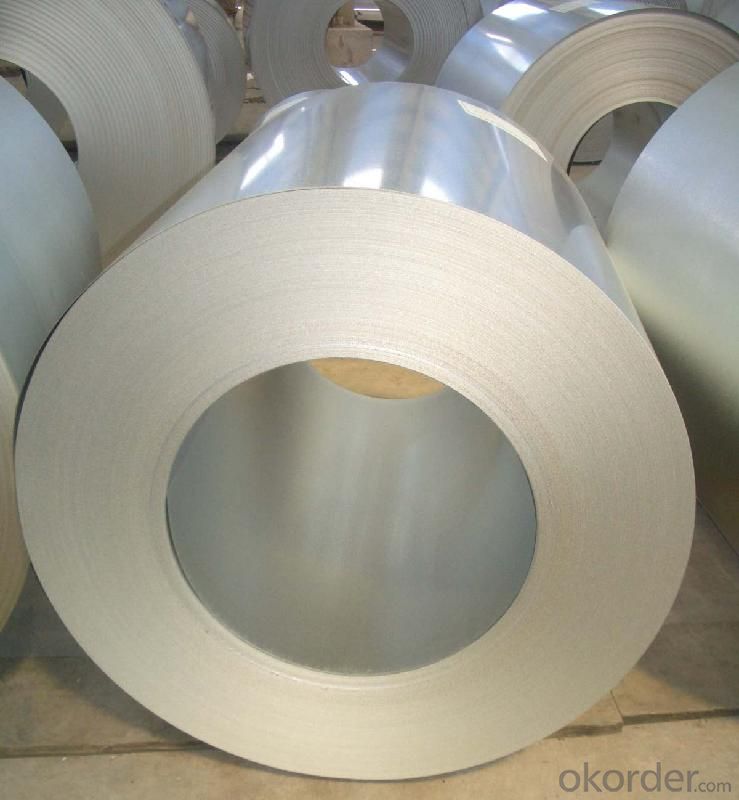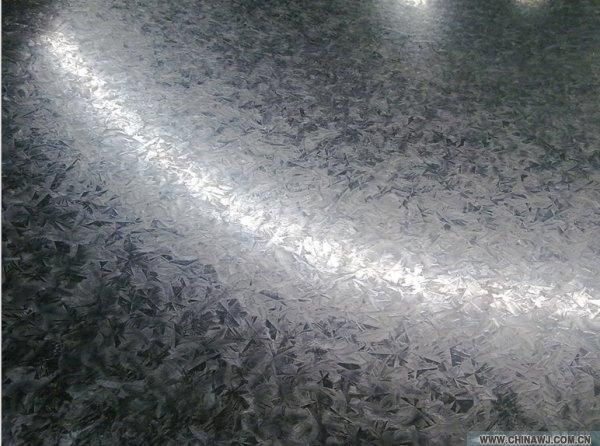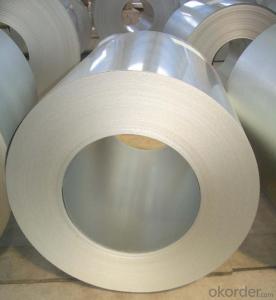Hot-dip Aluzinc Steel Building Roof Walls 1250mm max
- Loading Port:
- China main port
- Payment Terms:
- TT or LC
- Min Order Qty:
- 50 m.t.
- Supply Capability:
- 10000 m.t./month
OKorder Service Pledge
OKorder Financial Service
You Might Also Like
Hot-dip aluzinc steel has many excellent features: strong corrosion resistance, is three times the pure galvanized sheet; zinc surface with beautiful flowers, can be used as a building outside board.
1.Applications of hot-dip aluzinc steel:
1)Building: roof, walls, garages, soundproof walls, pipes and modular housing.
2)Automotive: muffler, exhaust pipes, wiper accessories, fuel tank, truck boxes, etc.
3)Appliances: refrigerator back, gas stove, air conditioners, microwave oven, LCD frame,
4)CRT-proof band, LED backlight, electrical cabinets, etc.
2.Main Features of hot-dip aluzinc steel:
• Excellent corrosion resistance
• High temperature oxidation resistance
• High hot reflectance
• Good manufacturability
3.Hot-dip Aluzinc Steel Images


4.Hot-dip Aluzinc Steel Specification
AVAILABLE SPECIFICATION | HOT-DIP ALUZINC STEEL COILS |
THICKNESS | 0.16mm-3.5mm |
WIDTH | 1250mm MAX |
COATING MASS | 30g/ m2-185 g/ m2 |
SPANGLE | Regular Spangle, Minimized Spangle, Zero Spangle |
SURFACE TREATMENT | Chromated / non-chromated, Oiled / non-oiled, Anti Finger Print |
COIL INNER DIAMETER | 508mm or 610mm |
5.FAQ of hot-dip aluzinc steel
1.What advantages does your company have?
Cement : Annual capacity of 400 million tons, No. 1 in the world
Fiberglass: Annual capacity of 1 million tons fiberglass, No. 1 in the world.
Glass: CNBM owns about 20 modern float glass product`ion lines, With annual capacity of 10 million square meters glass.
2.What advantages do your products have?
Firstly, our base material is of high quality, Their performance is in smooth and flat surface,no edge wave ,good flexibility.
Secondly, high quality zinc ingoats, 97.5% zinc,1.5% silicon,1% others, the same zinc coating measured by metal coating thickness or by zinc weight
Thirdly, high precision: Tolerance strictly according to ASTM or JISG standard even more rigid.
- Q:How are steel coils loaded onto a truck?
- Steel coils are typically loaded onto a truck using a combination of machinery and manual labor. The process involves several steps to ensure the safe and efficient loading of the coils. Firstly, the truck must be properly prepared for the loading process. This includes ensuring that the truck's bed is clean and free from any debris or obstacles that may interfere with the loading. The truck's bed may also be lined with protective materials such as rubber mats to prevent damage to both the coils and the truck. Next, a forklift or crane is used to lift and position the steel coils onto the truck. The forklift or crane operator must carefully maneuver the coils into place, ensuring that they are balanced and secured to prevent any shifting during transportation. It is essential to follow proper lifting techniques and safety protocols to avoid accidents or damage to the coils. Once the coils are positioned on the truck, they may be secured using various methods. This can include using straps, chains, or other restraints to hold the coils in place and prevent them from moving or falling during transit. The restraints must be properly tightened and checked to ensure they can withstand the weight and movement of the coils. It is important to note that the specific loading process may vary depending on the size and weight of the steel coils, as well as the equipment available. Some trucks may have specialized loading systems designed specifically for steel coils, which can streamline the loading process and enhance safety. Overall, loading steel coils onto a truck requires careful planning, skilled operators, and appropriate equipment. Following proper procedures and safety measures is crucial to ensure the successful transportation of the coils and to prevent any accidents or damage.
- Q:What are the different types of steel coil packaging methods?
- There are several types of steel coil packaging methods, including shrink wrapping, strapping, wooden crates, and steel or plastic bands.
- Q:How are steel coils used in the production of metal signage?
- The production of metal signage relies heavily on steel coils, which are indispensable components. These coils are typically crafted from top-notch steel and are available in various dimensions and widths. By utilizing steel coils, manufacturers can achieve efficient and cost-effective production methods. To commence the process, the steel coils are unraveled and fed into a machine known as a roll former or a metal press. This machine molds the steel into the desired shape and design for the signage. The malleability and moldability of the coils make them perfect for creating intricate and personalized signage designs. Once the steel has been shaped, it can undergo several treatments to enhance its appearance and durability. For instance, a layer of paint or powder coating can be applied to protect the steel from corrosion and provide an aesthetically pleasing finish. This protective coating can also be tailored to meet specific branding or design requirements. After the steel has been shaped and coated, it can undergo further processing to add features such as embossing or perforations. These additional details can amplify the overall visual appeal of the metal signage and make it truly stand out. Moreover, steel coils possess exceptional structural integrity, ensuring that the metal signage remains robust and long-lasting, even in harsh environmental conditions. This durability is particularly crucial for outdoor signage that needs to endure exposure to weather elements such as rain, wind, and sunlight. In conclusion, steel coils are indispensable in the production of metal signage. Their versatility, durability, and ease of manipulation make them the ideal material for creating customized designs. Whether the signage is intended for indoor or outdoor use, steel coils provide the necessary strength and aesthetic appeal needed for high-quality metal signage.
- Q:Can steel coils be reused?
- Yes, steel coils can be reused. Steel is a highly recyclable material, and steel coils can be melted down and used to produce new steel products. Recycling steel coils not only helps to conserve resources and reduce waste but also contributes to a more sustainable and environmentally-friendly manufacturing process.
- Q:What are the different methods of coil edge trimming?
- Various industries commonly use several methods for coil edge trimming. These methods include: 1. Shearing: Cutting the edges of the coil is accomplished using a shear blade. Shearing is a popular technique for thick coils and can be done manually or with a machine. It provides a clean and straight cut but may not be suitable for thin or delicate materials. 2. Slitting: In this process, the coil is passed through slitter knives that make multiple cuts along the edge, creating narrower strips. Slitting is commonly used for producing narrow coils or strips of various widths. It can be done in-line with a coil processing line or as a separate standalone process. 3. Laser cutting: A precise method of coil edge trimming, laser cutting employs a high-powered laser beam to cut through the material. It offers high accuracy and flexibility for cutting complex shapes or patterns. Laser cutting is commonly used for thin or delicate materials, minimizing the risk of deformation or damage caused by other cutting methods. 4. Plasma cutting: Plasma cutting is a thermal cutting process that employs a plasma torch to cut through the coil. It is suitable for cutting a wide range of materials, including thick coils. Plasma cutting is known for its high cutting speed and ability to cut through materials with high melting points, such as stainless steel or aluminum. 5. Waterjet cutting: This method utilizes a high-pressure jet of water mixed with an abrasive material to cut through the coil. It is a versatile technique that can cut a wide range of materials and thicknesses. Waterjet cutting provides a smooth and precise cut without heat-affected zones, making it suitable for sensitive materials. 6. Guillotine cutting: Guillotine cutting involves using a guillotine-style blade to cut through the coil. It is a quick and efficient method that provides a straight cut. Guillotine cutting is commonly used for cutting coils of various thicknesses and is often performed with a machine for higher precision. Each method of coil edge trimming has its own advantages and considerations depending on the specific requirements of the application. The choice of method usually depends on factors such as material properties, thickness, desired cutting accuracy, production volume, and budget constraints.
- Q:is cold roll or hot roll mill roller is cast steel? or cast iron?
- another name is Grey iron, come from groups of ferrous alloys
- Q:I have several stainless steel utensils and appliances, so when I put them through the dishwasher some of them are rusting, I think its because my current dishwashing soap is harsh, what is some great dishwashing soap that will clean my dishes and not be so hard on my stainless steel appliances and utensils?
- stainless steel does not work in a dish washer.Warm soapy water and dry straight away, they will last forever.
- Q:I am a complete idiot when it comes to anything musical, so please forgive me if this is a stupid question. I bought my son his first guitar, acoustic and didnt realize until after I purchased it that it has steel strings. Can I have the strings changed from steel to nylon???
- Nylon strings are more commonly used for classical style acoustic guitars, and most standard acoustics are set up to use steel strings. Nylon strings have less tension than steel strings so the sound won't be as full as steel strings. You may also notice some loud vibration from the top of the guitar since the strings don't have the proper tension. A guitar made for nylon strings uses thinner wood and is braced differently than one made for steel strings. The nylon strings won't put enough energy into the steel string guitar to make it vibrate correctly and develop the volume and harmonics that steel strings would. EDIT: To answer the second part of your question, it doesn't really matter what type of strings a beginner learns on. Nylon strings will be a little softer on the fingers, but once you build up calluses on your fingers it doesn't hurt anymore. There is no distinct advantage to a beginner learning with nylon strings as opposed to steel strings.
- Q:It seems that steel would be stonger and more stable than wood, fire resistant, and better for the environment, so why are most homes wood-framed rather than steel-framed?
- Because it's always been done that way. Never underestimate inertia when asking why new materials/techniques are not adopted. Besides, the cost does not give steel a clear advantage. You can drive a nail anywhere into a stud. With steel, you have to drill your holes precisely.
- Q:What are the different types of steel coil slitting machines?
- There are several types of steel coil slitting machines, including rotary slitters, loop slitters, and stationary slitters. Rotary slitters use rotating circular blades to cut the coils into desired widths, loop slitters use a looping process to cut the coils, and stationary slitters use stationary blades to slit the coils. Each type of machine has its own advantages and is suitable for different applications.
1. Manufacturer Overview |
|
|---|---|
| Location | |
| Year Established | |
| Annual Output Value | |
| Main Markets | |
| Company Certifications | |
2. Manufacturer Certificates |
|
|---|---|
| a) Certification Name | |
| Range | |
| Reference | |
| Validity Period | |
3. Manufacturer Capability |
|
|---|---|
| a)Trade Capacity | |
| Nearest Port | |
| Export Percentage | |
| No.of Employees in Trade Department | |
| Language Spoken: | |
| b)Factory Information | |
| Factory Size: | |
| No. of Production Lines | |
| Contract Manufacturing | |
| Product Price Range | |
Send your message to us
Hot-dip Aluzinc Steel Building Roof Walls 1250mm max
- Loading Port:
- China main port
- Payment Terms:
- TT or LC
- Min Order Qty:
- 50 m.t.
- Supply Capability:
- 10000 m.t./month
OKorder Service Pledge
OKorder Financial Service
Similar products
New products
Hot products
Related keywords




























